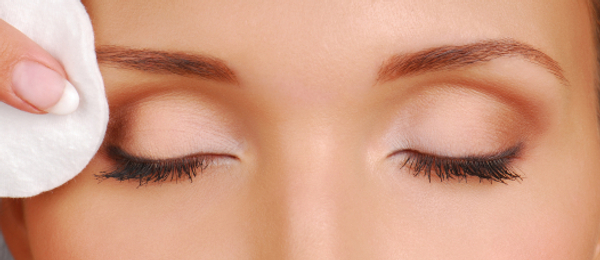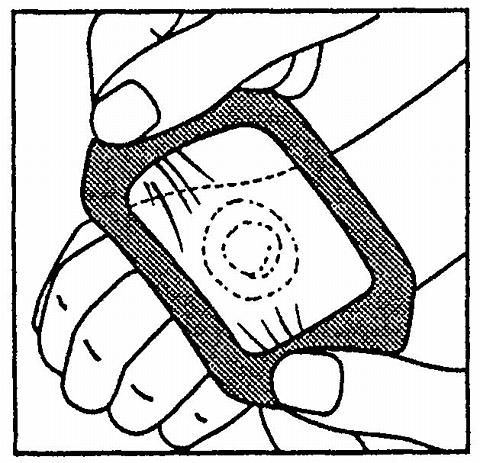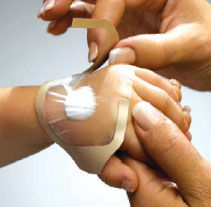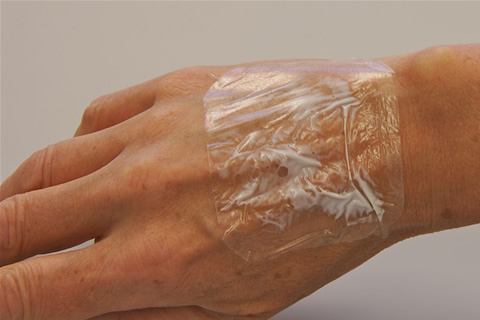[:en]
Here we are going to show you the prerequisites must be met before undergoing the aesthetic treatments using electrical arcing or aesthetic lasers

In order for the client to qualify to undergo the aesthetic treatments using electrical arcing or aesthetic lasers the following prerequisites must be met first:
- The client must be in good health at the time of the treatment, with no underlining chronic health conditions. If the client displays signs of cold or flue the treatment must be postponed.
- Those with problems of keloids, skin burns or diabetes should not undergo these aesthetic procedures.
- The area to be treated should not have undergone any previous medical treatment or cosmetic laser treatment.The client must not have taken any medicine for at least 7 days before undergoing the aesthetic treatment.
- The client must not have undergone any de-pigmentation treatment in the past.
- The client should not be waiting for a doctor appointment.
- The client must not display any tanning at the time of the treatment. This is especially important for tattoo removal or permanent makeup removal.
- The client must not display herpes simplex and not have had herpes simplex in the past even if dormant at the time of the treatment. In case of clients with herpes simplex, a full antiviral course should be completed before starting the aesthetic treatment.
- If the client wears a pace-maker avoid treatment with electrical arcing. Consult the pace-maker manufacturer and contact the specific electrical arcing device manufacturer for advice.

Remove all makeup before carrying out any aesthetic treatment using electrical arcing.
Before applying the numbing product, if any, remove all makeup from the face thoroughly by using normal makeup removal procedures. Once you have removed all makeup, apply an appropriate non-flammable antiseptic on a clean cotton pad and gently rub the area you are going to treat with the electrical arcing device. At that point, you can apply the appropriate numbing product.
Patch testing should always be performed before starting most aesthetic treatment using AC voltaic arcing. This is because patch testing can demonstrate that, if the after-care is performed correctly, the skin will recover well and there are no adverse effects to the particular aesthetic treatment.

However, in case of any benign moles or skin lesions removal, including Xanthelasma, Seborrheic Keratosis, Syringoma etc, patch testing is not strictly required. This is due to the fact that the inherent nature of the treatment does not allow it. Additionally, no aesthetic treatment aiming at removing any benign moles or skin lesion can guarantee scar-free results.
The key to patch testing is to carry out, in a small part of the skin, the particular aesthetic procedure in the same way and using the same treatment intensity you would when you then perform the treatment during the full aesthetic procedure. For example, if you intend to perform tattoo removal without using osmosis, using an electrical arcing device or a laser using a certain equipment configuration and in a certain way, then you only need to carry out the same procedure on a small part of a tattoo.
In the video below you can see a typical example of a patch test before carrying out a full tattoo removal procedure using electrical arcing with osmosis. The time required for the complete patch testing (including applying sterile Sodium Chloride) is less than 5 minutes.
Although the seasoned beauty practitioner can be tempted to carry out full procedures without the use of any patch testing based on one's extensive experience, from time to time any particular client can either overlook the after-care or accidentally contract an infection or some adverse effects could develop. At that point, the experience of the patch test previously carried out provides the peace of mind of knowing that no adverse effects can be attributable to the treatment per se, provided that the treatment is carried out in a similar way as it was carried out during the patch test.
It is advisable to numb the area before carrying out any aesthetic treatment using electrical arcing devices for aesthetic applications. This is not always strictly required, however, it is advisable for the client's comfort. Also, because the client is at ease while the area to be treated is numb, the treatment can be carried out speedily and with ease.
Not all kinds of numbing solutions are appropriate for all the types of aesthetic treatments possible with electrical arcing. For example, injectable local anaesthetics are purposely avoided in skin tightening as they can interfere with the final results and may lead to undesirable effects. However, electrical arcing has been used for several years for the removal of all sorts of benign skin lesions leading to good results and no direct known cause for concern, even if using injectable local anaesthetics. Please note that, in many countries, only medical practitioners are usually authorised to use injectable local anaesthetics.

The three steps to applying correctly most numbing products available on the market without a prescription.
The preferred numbing option is the use of topical products. The advantage of using topical numbing products is that they are suitable for all kind of treatments with electrical arcing including moles and benign skin lesions removal.
The main type of numbing topical product available on the market depends on the local legislation. Different professionals are allowed to use different products in each country. (Consult local legislation for further information).

Occlusion applied to the numbing cream to amplify the numbing effects of the active ingredients in most topical numbing products available without a prescription.
A very common topical numbing product available on the market, in most parts of Europe, including the UK is EMLA. (EMLA is available in 5% formulations from

Occlusion applied using a purpose made a patch available from most chemists.
most chemists in the UK). This is a product which can be purchased and used without a medical prescription. Because of this, EMLA is also the preferred numbing product used by tattoo artists for tattooing and performing body piercings.
EMLA is used by applying the cream on the area you intend to treat (including moles, skin lesions etc) and covering the cream with a normal cling film. The same cling film which can be purchased from any supermarket. The cling film is applied in order to cause an occlusion effect which will amplify the effects of the numbing active ingredients in the EMLA numbing cream. The area is then left to rest for approximately 40 to 45 minutes in order to achieve the desired numbing effects.
In the video above you can see the EMLA applied on the eyelids using occlusion. As you can see, although the aesthetic treatment has started on other parts of the face the product has not been removed from the orbital region because eyelid tightening would be carried out a few minutes later.
Unfortunately, although available without prescription form any chemist in the UK, EMLA requires a relative long application time in order to become effective and it is not generally very effective if a cling film is not applied on top of the cream (occlusion). If you attempt to start the aesthetic treatment before the 40 minutes required for the product to become effective, the area may not be numb enough, in order to carry out the aesthetic treatment in ease and comfort. Additionally, the topical effects of the EMLA formulation end within 5 to 10 minutes from the time the cling film is removed and the EMLA residues wiped off. Therefore the window of time while you can perform the aesthetic treatment in comfort is relatively brief.
Some Medical practitioners can be authorised to use other numbing products. The formulation that has been extensively and successfully used by medical practitioners who use electrical arcing devices for aesthetic purposes is the following topical custom formulated product:
Formulation active ingredients: Lidocaine 20%, Prilocaine 5%, Tetracaine 5%.
This topical product is either made in a gel or cream formulation. In European countries like Italy and Spain, this is made by most local chemists who also have an internal licensed laboratory to manufacture these types of products. In Europe, this type of topical formulation can only be sold under medical prescription (therefore under the sole responsibility of the medical practitioner who orders the product).
Due to current regulations, this is a product which can be used by medical practitioners only or under their direct supervision. The main advantage of using this type of formulation is that the desired numbing effects are achieved almost immediately and are so good that the client will only feel a tickling sensation when the electrical arc is applied. The area where this formulation is applied becomes numb within 5 to 10 minute after the application. Please note that these types of products are not meant to be completely absorbed, therefore all you have to do is applying the cream or gel, on the area you intend to treat and leave the product to work. With this formulation, there will be no need to apply a cling film because the product itself will be strong enough to achieve the desired numbing effects in a relatively short time frame. Additionally, the numbing effects last longer than those products available over the counter.
In the video above you can see an example of a professional custom made topical numbing product applied on the perioral area in order to numb the skin before a perioral lines attenuation treatment. As you can see occlusion is not necessary. The numbing effects start within 5 minutes from the application of the cream. The specific treatment you see in the video is atrophic scar attenuation.
In any case, whenever you start the treatment on a relatively large area, on a tattoo, for instance, remember to remove the topical anaesthetic in small sections. The common mistake made by beginners is to remove all the numbing product all at once. For example, if the topical anaesthetic has been placed on both upper eyelids, the untrained beginner usually removes the cream on both eyelids before starting the treatment. The main problem is that the effect of most topical numbing products does not last long (in case of EMLA only 5 to 10 minutes at most). Therefore the effect of the topical anaesthetic could start to fade before the end of the treatment making the procedure cumbersome.
For eyelid tightening and similar skin tightening procedures, using electrical arcing, the use of local injectable anaesthetics must be avoided even if the beauty practitioner is authorised to use them.
So to summarise, the use of appropriate topical numbing products is advisable before any treatment using electrical arcing, while the use of injectable local anaesthetic is not strictly needed and sometimes must be avoided especially for eyelid tightening and skin tightening in general. Given the fact that topical numbing products are generally easy to use and are sufficient for all types of aesthetic procedures using electrical arcing, the use of injectable local anaesthetics although possible for some treatments are not generally justifiable while using electrical arcing for aesthetic applications.
[:es]
Aquí le mostraremos los requisitos previos que deben cumplirse antes de someterse a los tratamientos estéticos con arco eléctrico o láseres estéticos.

Para que el cliente califique para someterse a los tratamientos estéticos utilizando arcos eléctricos o láseres estéticos, se deben cumplir primero los siguientes requisitos previos:
- El cliente debe estar en buen estado de salud al momento del tratamiento, sin subrayar las condiciones de salud crónicas. Si el cliente muestra signos de frío o humo, el tratamiento debe posponerse.
- Aquellos con problemas de queloides, quemaduras en la piel o diabetes no deben someterse a estos procedimientos estéticos.
- El área a tratar no debe haber sido sometida a ningún tratamiento médico previo o tratamiento con láser estético. El cliente no debe haber tomado ningún medicamento durante al menos 7 días antes de someterse al tratamiento estético.
- El cliente no debe haber sufrido ningún tratamiento de pigmentación en el pasado.
- El cliente no debe estar esperando una cita con el médico.
- El cliente no debe mostrar ningún bronceado en el momento del tratamiento. Esto es especialmente importante para la eliminación de tatuajes o la eliminación de maquillaje permanente.
- El cliente no debe mostrar herpes simple ni haber tenido herpes simple en el pasado, incluso si está inactivo en el momento del tratamiento. En el caso de clientes con herpes simple, se debe completar un curso antiviral completo antes de comenzar el tratamiento estético.
- Si el cliente usa un marcapasos, evite el tratamiento con arco eléctrico. Consulte al fabricante del marcapasos y comuníquese con el fabricante del dispositivo de arco eléctrico específico para obtener asesoramiento.

Quítese todo el maquillaje antes de realizar cualquier tratamiento estético con arco eléctrico.
Antes de aplicar el producto anestésico, si lo hubiera, retire completamente todo el maquillaje de la cara mediante los procedimientos normales de eliminación de maquillaje. Una vez que haya eliminado todo el maquillaje, aplique un antiséptico no inflamable apropiado en un paño de algodón limpio y frote suavemente el área que va a tratar con el dispositivo de arco eléctrico. En ese momento, puede aplicar el producto de adormecimiento apropiado.
Las pruebas de parches siempre deben realizarse antes de comenzar la mayoría de los tratamientos estéticos con arco voltaico de CA. Esto se debe a que la prueba de parche puede demostrar que, si el cuidado posterior se realiza correctamente, la piel se recuperará bien y no hay efectos adversos para el tratamiento estético en particular.

Sin embargo, en caso de remoción de lunares o lesiones de la piel benignas, incluyendo Xantelasma, queratosis seborreica, siringoma, etc., no es estrictamente necesario realizar pruebas de parches. Esto se debe al hecho de que la naturaleza inherente del tratamiento no lo permite. Además, ningún tratamiento estético destinado a eliminar lunares benignos o lesiones cutáneas puede garantizar resultados sin cicatrices.
La clave para la prueba de parches es llevar a cabo, en una pequeña parte de la piel, el procedimiento estético particular de la misma manera y utilizando la misma intensidad de tratamiento que cuando realiza el tratamiento durante el procedimiento estético completo. Por ejemplo, si pretende realizar la eliminación de tatuajes sin utilizar ósmosis, utilizando un dispositivo de arco eléctrico o un láser utilizando una configuración de equipo determinada y de cierta manera, solo necesita realizar el mismo procedimiento en una pequeña parte del tatuaje.
En el video a continuación, puede ver un ejemplo típico de una prueba de parche antes de llevar a cabo un procedimiento completo de eliminación de tatuajes utilizando arcos eléctricos con ósmosis. El tiempo requerido para la prueba completa del parche (incluida la aplicación de cloruro de sodio estéril) es inferior a 5 minutos.
Aunque el especialista en belleza experimentada puede sentirse tentado a realizar procedimientos completos sin el uso de pruebas de parches basadas en la amplia experiencia, cada cliente en particular puede pasar por alto la atención posterior o contraer accidentalmente una infección o algunos efectos adversos desarrollar. En ese momento, la experiencia de la prueba de parche realizada anteriormente brinda la tranquilidad de saber que no se pueden atribuir efectos adversos al tratamiento en sí, siempre que el tratamiento se realice de manera similar a como se realizó durante la prueba de parche.
Es aconsejable adormecer el área antes de realizar cualquier tratamiento estético utilizando dispositivos de arco eléctrico para aplicaciones estéticas. Esto no siempre es estrictamente necesario, sin embargo, es recomendable para la comodidad del cliente. Además, debido a que el cliente está cómodo, mientras que el área a tratar está adormecida, el tratamiento se puede llevar a cabo con rapidez y facilidad.
No todos los tipos de anestésicos son adecuadas para todos los tipos de tratamientos estéticos posibles con arco eléctrico. Por ejemplo, los anestésicos locales inyectables se evitan deliberadamente en el estiramiento de la piel, ya que pueden interferir con los resultados finales y pueden provocar efectos indeseables. Sin embargo, el arco eléctrico se ha utilizado durante varios años para la eliminación de todo tipo de lesiones benignas de la piel que dan lugar a buenos resultados y no son causa directa de preocupación, incluso si se utilizan anestésicos locales inyectables. Tenga en cuenta que, en muchos países, solo los médicos están generalmente autorizados para usar anestésicos locales inyectables.

Los tres pasos para aplicar correctamente la mayoría de los productos anestésicos disponibles en el mercado sin receta médica.
La opción de adormecimiento preferida es el uso de productos tópicos. La ventaja de utilizar productos anestésicos tópicos es que son adecuados para todo tipo de tratamientos con arco eléctrico, incluidos la eliminación de lunares y lesiones benignas de la piel.
El tipo principal de producto tópico para adormecer disponible en el mercado depende de la legislación local. Diferentes profesionales pueden utilizar diferentes productos en cada país. (Consulte la legislación local para más información).

Oclusión aplicada a la crema anestésica para amplificar los efectos adormecedores de los ingredientes activos en la mayoría de los productos anestésicos tópicos disponibles sin receta.
Un producto anestésico tópico muy común disponible en el mercado, en la mayor parte de Europa, incluido el Reino Unido, es EMLA. (EMLA está disponible en formulaciones al 5% de

La oclusión aplicada con un propósito hizo que un parche estuviera disponible en la mayoría de los químicos.
La mayoría de los químicos en el Reino Unido. Este es un producto que se puede comprar y usar sin una receta médica. Debido a esto, EMLA es también el producto de anestésico preferido utilizado por los artistas del tatuaje para tatuar y realizar piercings en el cuerpo.
EMLA se utiliza aplicando la crema en el área que pretende tratar (incluidos los lunares, las lesiones de la piel, etc.) y cubriendo la crema con una película adhesiva normal. La misma película adhesiva que se puede comprar en cualquier supermercado. La película adhesiva se aplica para provocar un efecto de oclusión que amplificará los efectos de los ingredientes activos para adormecer la crema para adormecer EMLA. El área se deja reposar durante aproximadamente 40 a 45 minutos para lograr los efectos de adormecimiento deseados.
En el video de arriba puede ver el EMLA aplicado en los párpados usando oclusión. Como puede ver, aunque el tratamiento estético ha comenzado en otras partes de la cara, el producto no se ha eliminado de la región orbital debido a que el estiramiento de los párpados se realizará unos minutos más tarde.
Desafortunadamente, aunque está disponible sin receta médica en cualquier farmacia del Reino Unido, EMLA requiere un tiempo de aplicación relativamente largo para que sea efectivo y generalmente no es muy efectivo si no se aplica una película adhesiva sobre la crema (oclusión). Si intenta iniciar el tratamiento estético antes de los 40 minutos requeridos para que el producto sea efectivo, es posible que el área no esté lo suficientemente adormecida para llevar a cabo el tratamiento estético con facilidad y comodidad. Además, los efectos tópicos de la formulación de EMLA terminan dentro de 5 a 10 minutos desde el momento en que se retira la película adhesiva y se eliminan los residuos de EMLA. Por lo tanto, la ventana de tiempo mientras puede realizar el tratamiento estético con comodidad es relativamente breve.
Algunos médicos pueden estar autorizados a usar otros productos anestésicos. La formulación que ha sido utilizada de manera extensiva y exitosa por los médicos que usan dispositivos de arco eléctrico con fines estéticos es el siguiente producto tópico formulado a la medida::
Ingredientes activos de formulación: Lidocaína 20%, Prilocaína 5%, Tetracaína 5%.
Este producto tópico se hace en forma de gel o crema. En países europeos como Italia y España, esto lo hacen la mayoría de los químicos locales que también tienen un laboratorio interno autorizado para fabricar este tipo de productos. En Europa, este tipo de formulación tópica solo puede venderse bajo prescripción médica (por lo tanto, bajo la exclusiva responsabilidad del médico que encarga el producto).
Debido a las regulaciones actuales, este es un producto que puede ser utilizado por los médicos únicamente o bajo su supervisión directa. La principal ventaja de usar este tipo de formulación es que los efectos anestésicos deseados se logran casi de inmediato y son tan buenos que el cliente solo sentirá una sensación de cosquilleo cuando se aplique el arco eléctrico. El área donde se aplica esta formulación se adormece dentro de 5 a 10 minutos después de la aplicación. Tenga en cuenta que este tipo de productos no están diseñados para ser absorbidos completamente, por lo tanto, todo lo que tiene que hacer es aplicar la crema o el gel en el área que desea tratar y dejar el producto para que funcione. Con esta formulación, no habrá necesidad de aplicar una película adhesiva porque el producto en sí será lo suficientemente fuerte como para lograr los efectos de adormecimiento deseados en un período de tiempo relativamente corto. Además, los efectos de adormecimiento duran más que los productos disponibles sin receta.
En el video de arriba, puede ver un ejemplo de un producto de adormecimiento tópico hecho por encargo profesional aplicado en el área perioral para adormecer la piel antes de un tratamiento de atenuación de las líneas periorales. Como se puede ver no es necesaria la oclusión. Los efectos anestésicos comienzan a los 5 minutos de la aplicación de la crema. El tratamiento específico que se ve en el video es la atenuación atrófica de la cicatriz.
En cualquier caso, cuando inicie el tratamiento en un área relativamente grande, en un tatuaje, por ejemplo, recuerde quitar el anestésico tópico en secciones pequeñas. El error común que cometen los principiantes es eliminar todos los productos adormecidos de una vez. Por ejemplo, si el anestésico tópico se ha colocado en ambos párpados superiores, el principiante sin entrenamiento por lo general elimina la crema en ambos párpados antes de comenzar el tratamiento. El principal problema es que el efecto de la mayoría de los productos anestésicos tópicos no dura mucho tiempo (en el caso de EMLA, de 5 a 10 minutos como máximo). Por lo tanto, el efecto de la anestesia tópica podría comenzar a desvanecerse antes de que finalice el tratamiento haciendo que el procedimiento sea engorroso.
Para el estiramiento de los párpados y procedimientos similares de estiramiento de la piel, utilizando arcos eléctricos, debe evitarse el uso de anestésicos inyectables locales, incluso si el profesional de la belleza está autorizado a usarlos.
Entonces, para resumir, es recomendable el uso de productos adormecedores tópicos apropiados antes de cualquier tratamiento con arco eléctrico, mientras que el uso de anestésicos locales inyectables no es estrictamente necesario y, a veces, debe evitarse especialmente para el ajuste de los párpados y el estiramiento de la piel en general. Dado que los productos adormecedores tópicos son generalmente fáciles de usar y son suficientes para todos los tipos de procedimientos estéticos que usan arcos eléctricos, el uso de anestésicos locales inyectables, aunque es posible para algunos tratamientos, no es generalmente justificable al usar arcos eléctricos para aplicaciones estéticas.
[:]


